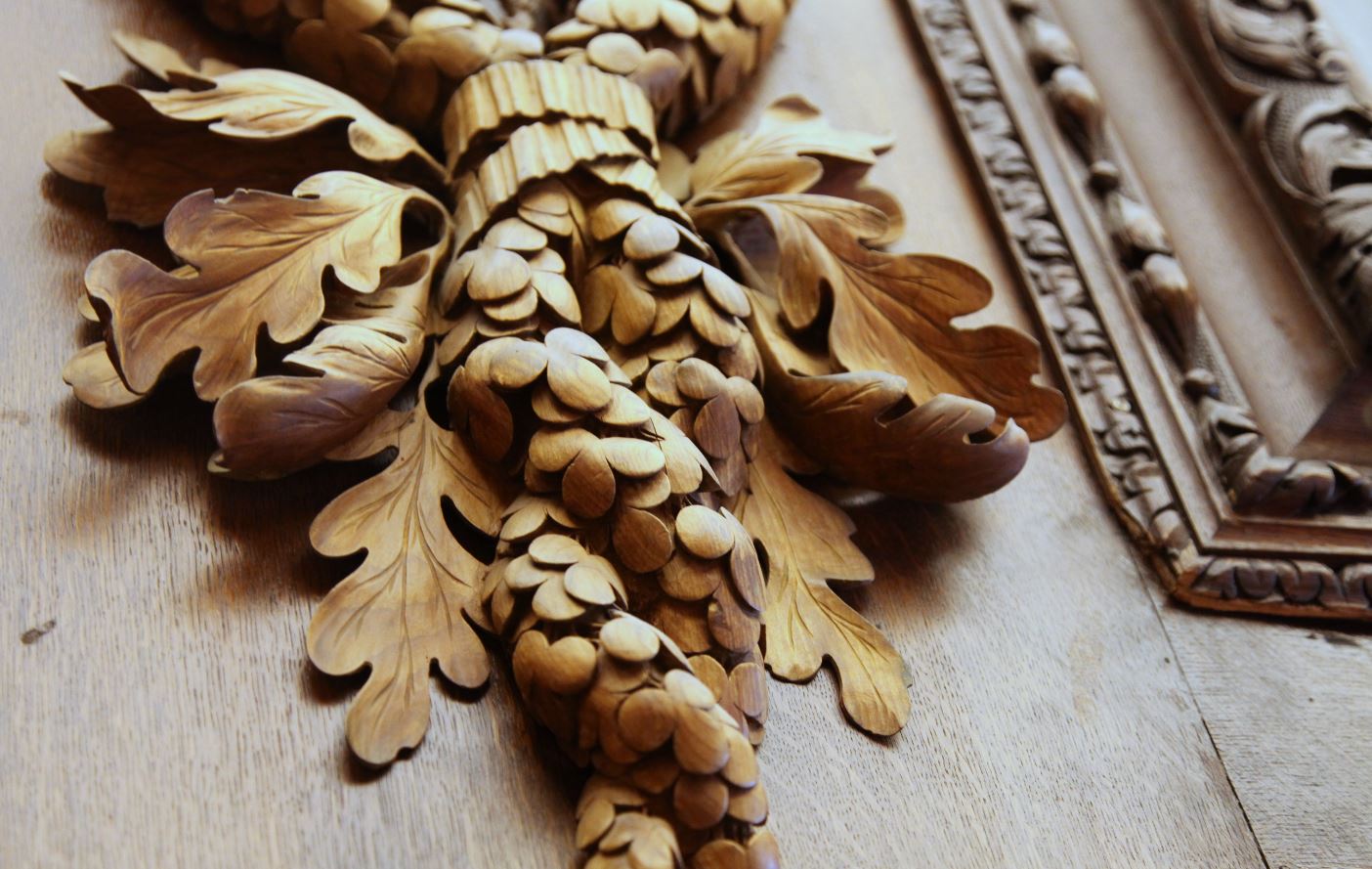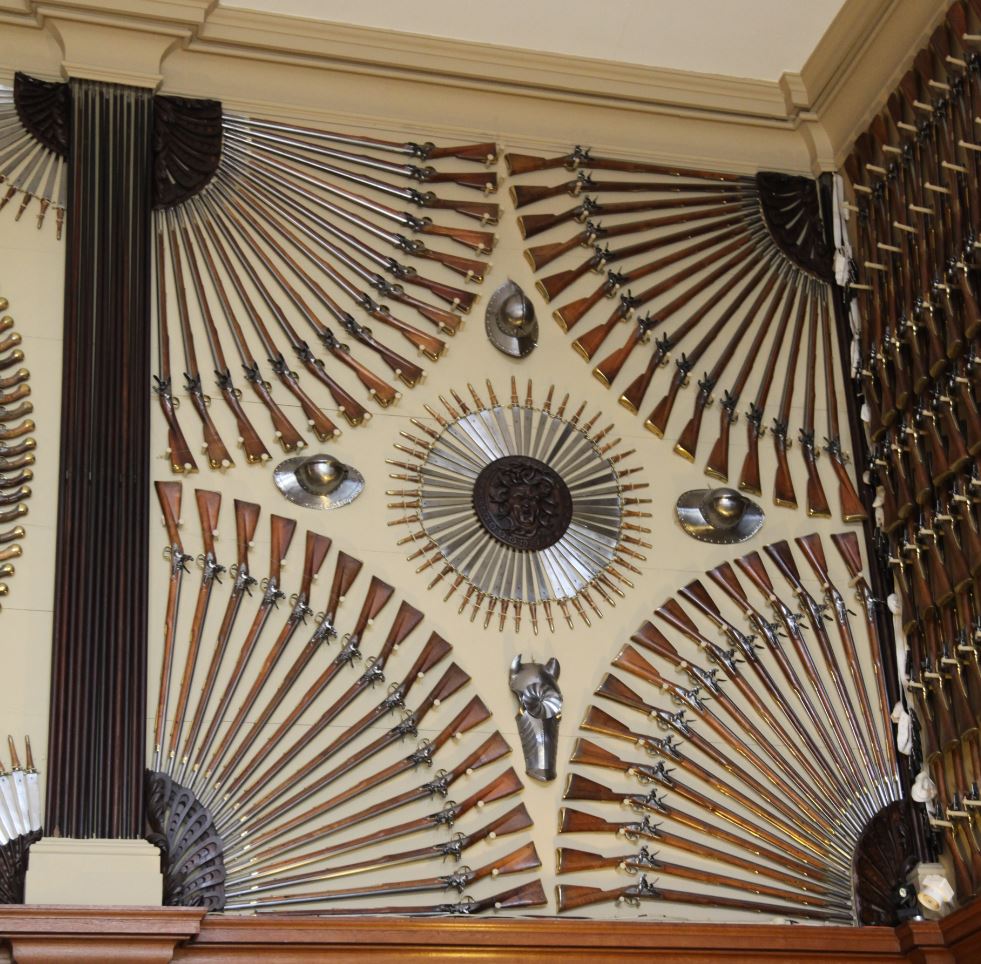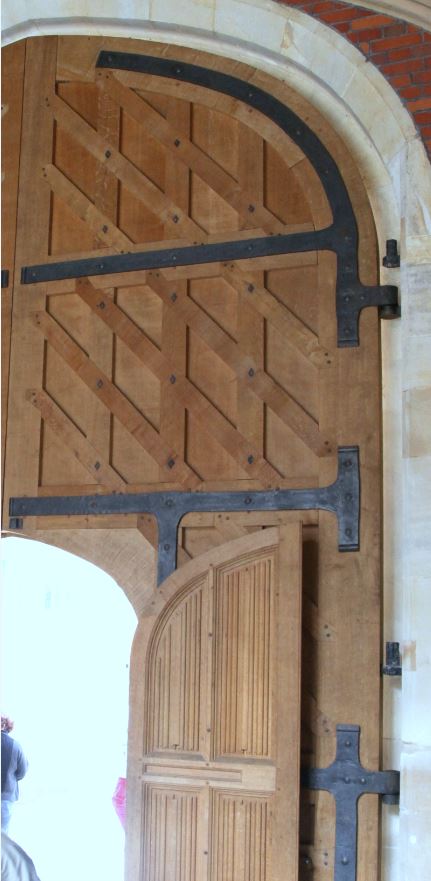The Master Builder’s Top 10 Bucket List. #10 Hampton Court- England
As I was researching historic French Iron work for a project, I ran across a great book, Wrought Iron In Architecture, by Gerald K. Geerlings. It was published in 1929 (yes this is one for your library) and it describes and compares historical architectural ironwork. He contrasts periods, regions and also rates skill level and craft. For instance, French Iron work in 1700 vs. Italian artisans in the same period. It is a great resource and it sparked an idea that I will hopefully expand in the coming months; The master builder’s bucket list, places every craftsman/builder should visit before he or she, kicks the proverbial bucket.
The goal is to see the worlds finest surviving craft. This bucket list is meant to be a guide to the “holy” sites of fine craftsmanship. If a religious person makes a spiritual pilgrimage, where would a devotee of fine craft travel? Where are the places around the world that represent the pinnacles of craft and design. Hopefully over the comings months, I’ll share my top 10.
For today’s post, I start with #10, Hampton Court and the carvings of Grinling Gibbons.

Place: Hampton Court 12 miles outside of London.
Building Trade of most interest: WOODWORKER – CARVER:
Other areas of interest: Tudor design, Classical design, Classical gardens, Amazing gun/armory room.
History: Hampton Court was built and started in the 1500’s with an addition in the early 1700’s during the Baroque era. It is a unique combination of Tudor and Baroque building styles. Note in the aerial picture above, the Tudor palace is in front and the Baroque addition by Christopher Wren in the back.
This is the Tudor Front entry dating to the early 1500’s.

This is the Baroque face dating to the early 1700’s.

Where the two styles and eras join there is an interesting contrast. Note the classical entry by Wren and the strong Tudor elements behind. I find it kind of interesting and fun.

Artisan: Grinling Gibbons- carver

Importance and significance: Arguably one of the greatest carvers who ever lived was a man named Grinling Gibbons. He was a Dutch craftsman/carver who moved to England looking for work in the early 1700’s. He was “discovered” by an influential man who recommended Gibbons to his wealthy friends. His carvings are revered for their light, fragile and intricate form. He carved in lime wood which has a very even grain allowing a great deal of undercutting and back carving which isn’t possible in other woods. Gibbons carving and this special wood allowed his carvings to appear paper thin and in turn define his style.
I’m only going to share one room in the Baroque palace, you need to visit yourself to discover the rest. Gibbons carvings festoon the painting of the king over the fireplace.

Note the contrast between Gibbons carvings which spring from the wall and look near life-like, to the more traditional (though still great) carvings on the mantel shelf and picture frame. It is an astounding difference.

Note too in these pictures the delicacy of the leaves, drapes, flower petals and how fragile they appear. The physical execution and display of skill is mind-boggling today.



Other highlights to see while your there.
The armory: WOW! Remember king’s built palaces to show off. This armory with the pistols and swords was a show of force and power as well as wealth. It was intended to intimidate visiting dignitaries. Although not intimidated, I was deeply impressed.

We are building a gun room for a client. This is certainly a different spin on the traditional gun case.


The Classical Gardens: No visit to Hampton Court, Versailles, or any grand home or building of this period is complete without a view of the formal gardens. My favorite part at Hampton Court is this arbor/trellis, note the great details in the surround. It is all oak by the way. Yes, those cuties are my daughters.

The Tudor section: I love Tudor architecture. The paneled walls, linen fold carvings, etc. The Tudor portion of Hampton court has many many wonderful charms. Note in this picture that many of the details and ideas we use in our Tudor architecture are found here; Fancy chimney details, windows with stone surrounds, the Tudor/gothic arches. etc.

I also love the craftsmanship. Note this oak door which on the front side is ornamented with linen fold panels, yet on the back is put together with stout and complex joinery. Fun stuff!!


Significance- Why is this on the bucket list? We live in an age of high-technology and low-craft. Grinling Gibbons represents a pinnacle in carving mastery. The opportunity for us today is to find inspiration and take lessons from Grinling’s achievements that ideally will lead us to better design and finer craftsmanship.
Hand carving is a lost art today. Yes, I know people still carve wood but not to the level of mastery we find in the past. We are fooled into believing that with our improved technology that carving is easy. All you do is scan a picture into a computer and the machine cuts it out. If you compare the carvings made today vs. historic carvings it like comparing a wedding cake to a Twinkie. One is beautiful and hand-made, the other is mass produced and can kill you. What Grinling does is take carvings farther than most people have since or before. He makes them seem truly lifelike and achieves something with wood that few thought were possible.
Inspiration and encouragement: I want to encourage those who are passionate for craft like me to continue to work hard and practice your trade. Proverbs 22:29: “See a man skilled in his work? He will serve before kings.” Good skill and talent will be found out. I implore you to dedicate your life to craft and better design. Gibbons was “by legend” discovered working at his bench. He was buried in his craft, toiling away. He didn’t have an awesome website, but rather was dedicated to fine craft. Today, where there is so little craft, there is no wasted time in practice. If you truly put in the 10,000+ hours it takes to be skilled in a trade/craft you will be rewarded.
Finally to learn more about Gibbons and this period, I urge you to read David Esterly’s great book Grinling Gibbons and The Art of Carving. Cheers.
-B

